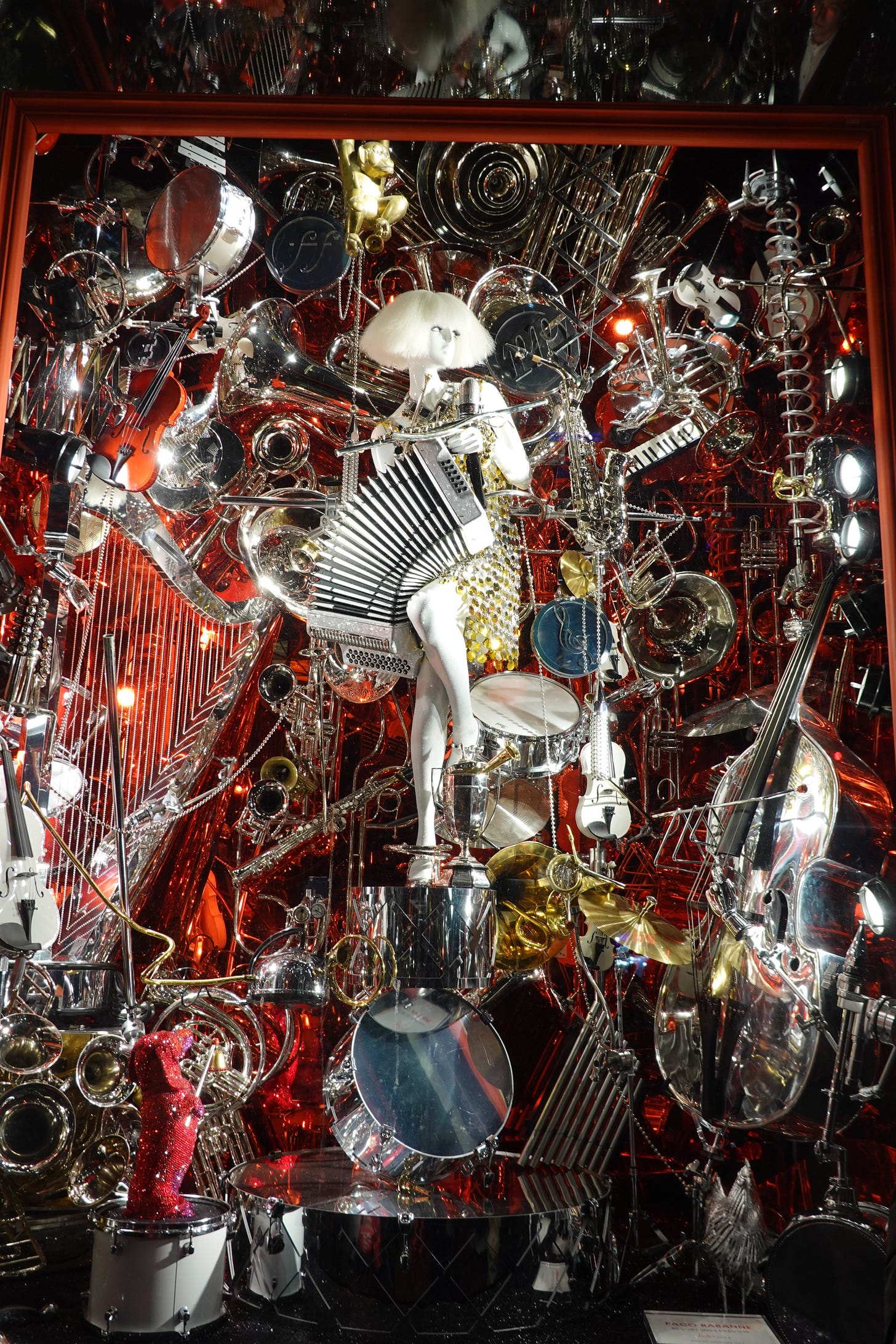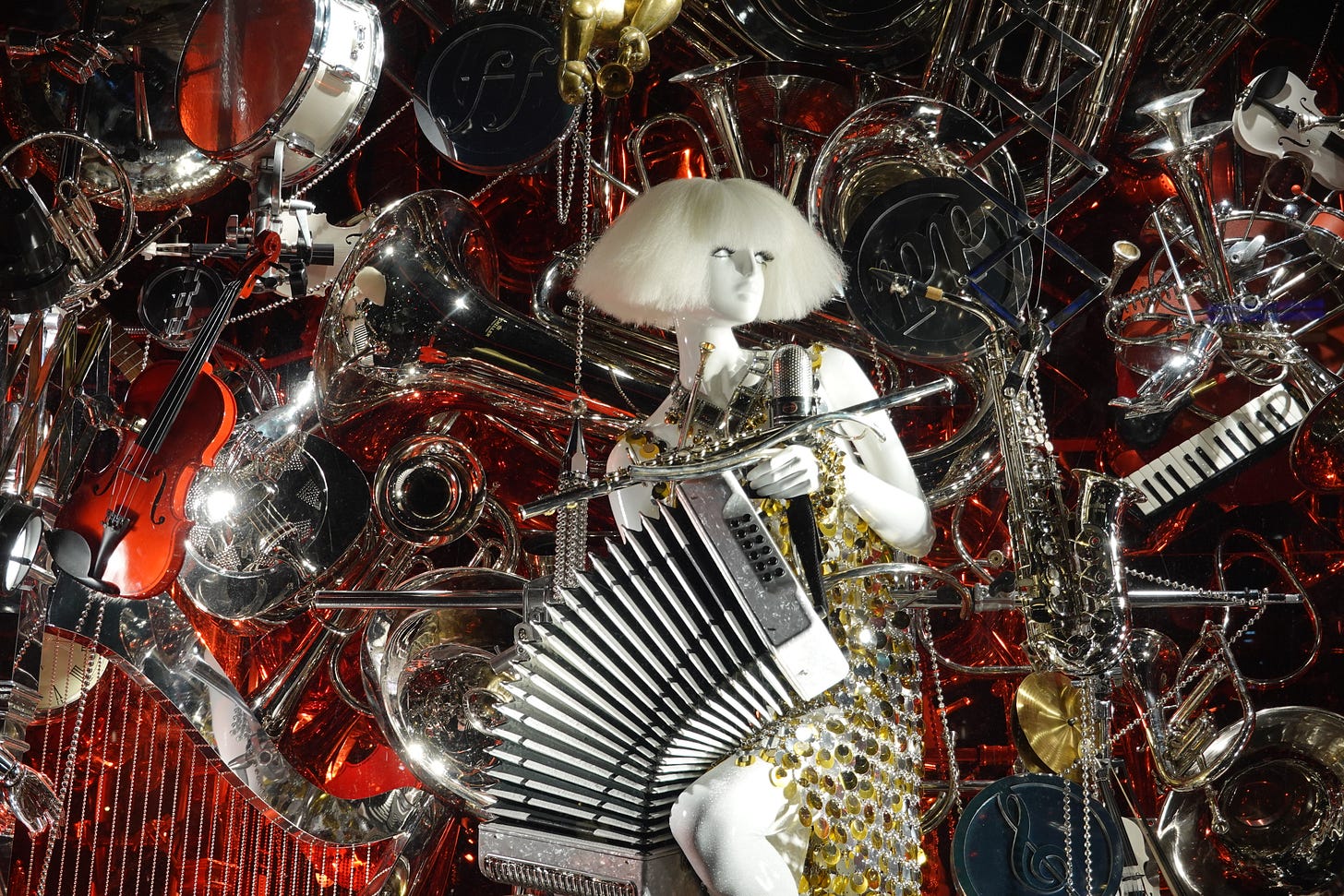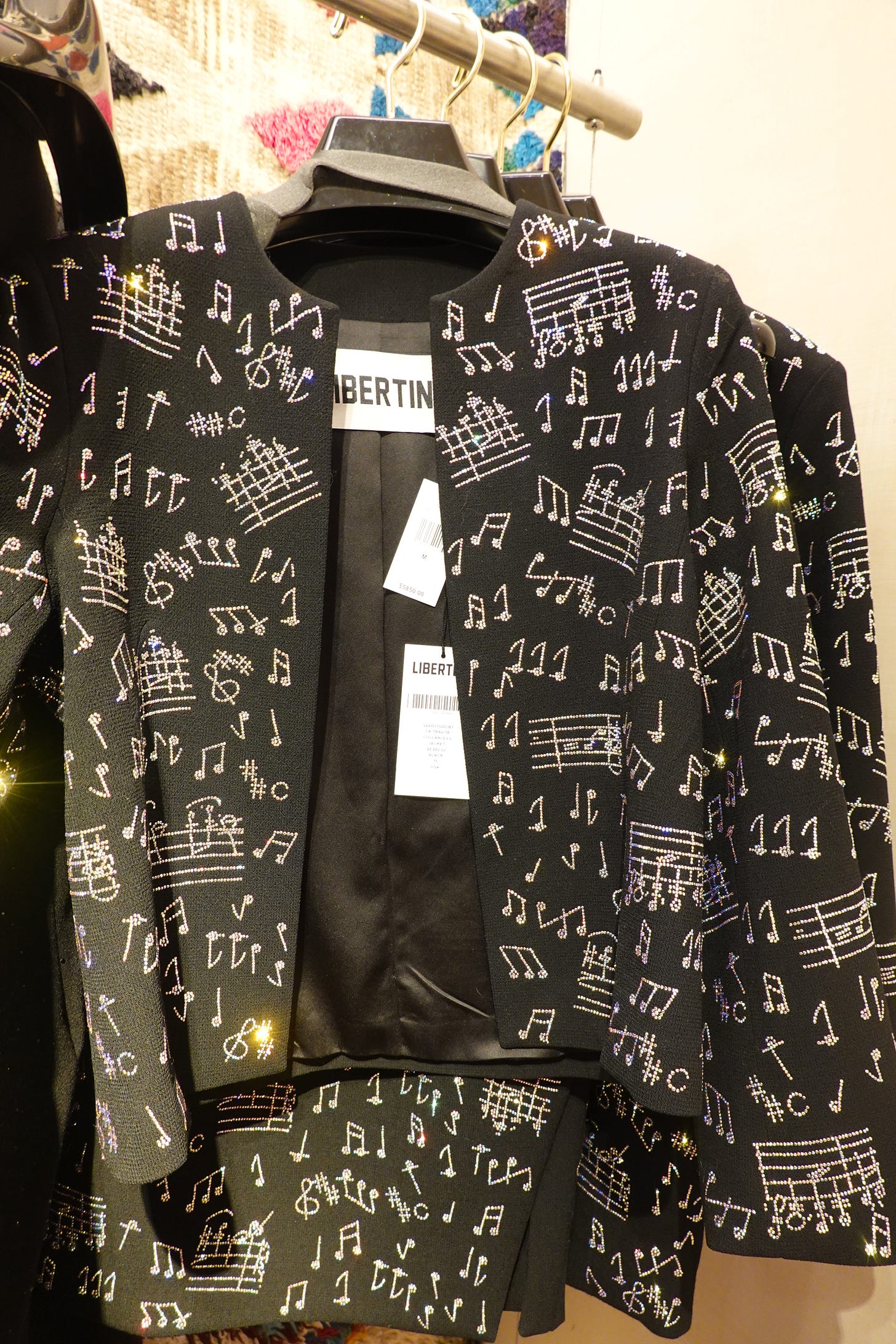Magic in the Making
A mannequin in a sequin flapper dress and Sia wig plays the accordion. Her high-heeled foot balances on three drums, stacked snowman-style.
Around her: trumpets, horns, flutes, and saxophones; violins, double bass, keyboard, and harp. Everything all silver, gold, black, white, and red.
What could be more lavish?
The theme for Bergdorf Goodman’s windows this year is “Magic in the Making.” The seven windows showcase different “crafts:” papier mâché, woodworking, dressmaking, etc.
But it was unclear to me whether the abovementioned window represented “luthiery” or “music-making” itself. And isn’t the theme a bit of a cop-out, considering that all displays are “made”?
Stepping inside, I was serenaded by two string players amongst the handbags. I was then greeted by a “tree” made from tambourines, cellos, guitars, and banjos.
They were covered, strings and all, in thick, white paint. Rendered mute, as if by a layer of snow. Surrounding them: artificial flowers, frosted plastic grapes, flameless candles.
There was something very Baroque about it all. Or maybe Rococo.
I thought of Tiepolo, of gilded cartouches, of vanitas paintings with broken strings. I pictured Elias van Nijmegen’s public-domain still life, reproduced on far too many orchestra posters.
I was also reminded of the Met Museum’s brass display. Another window, of sorts.
Indeed, there’s something visually satisfying about instrumental clutter. The evocation of a disembodied orchestra.
But what I was most interested in was the inherent un-making in these displays. The painting over of music instruments, functional turning to decorative.
How fitting that a luxury department store such as Bergdorf Goodman should call upon such an iconography of extravagance and wastefulness.
On an upper floor, I look lustily upon a Libertine jacket with diamond-encrusted music notes. I peek at the price tag: $5,850.









